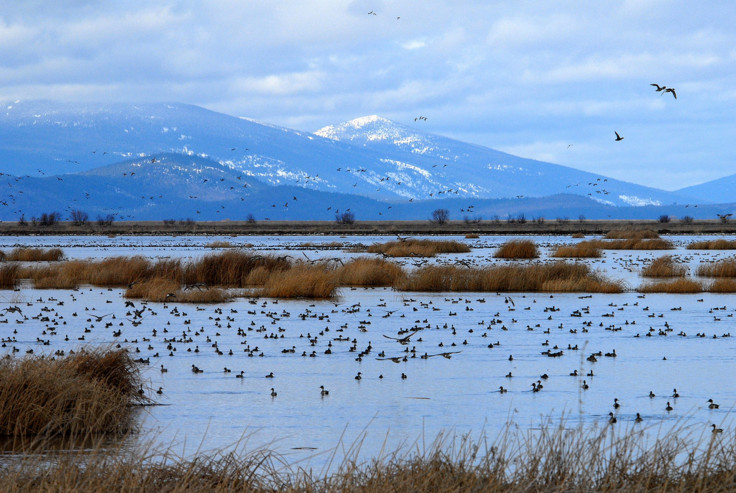Climate Change Solutions: Wetlands Are More Powerful In Fighting Climate Change Than Previously Thought

Swamps and wetlands play a greater role in fighting climate change than previously thought. The marshy areas are powerfully effective at capturing carbon dioxide emissions and keeping them out of the atmosphere, Australian researchers found.
Climate experts in recent years have largely focused on the role of rainforests in soaking up carbon, with billions of dollars in public and private money spent on protecting and replanting trees. But new research suggests wetlands are up to 50 times more effective than forests at storing CO2, mainly because the watery areas last longer than trees.
“Our preliminary studies suggest that wetlands can sequester up to 33 percent of the carbon in terrestrial soils, yet they only take up about 4 percent of the Earth’s land surface,” Rebecca Lester, a freshwater and estuarine ecology expert at Australia’s Deakin University, said Monday in a statement.
Reducing concentrations of carbon in the atmosphere is critical for slowing the rate of global warming, scientists say. Concentrations are now above 399 parts per million, according to the U.S. National Oceanic and Atmospheric Administration. That’s about 14 percent higher than the maximum “safe” zone of 350 parts per million, the level at which scientists agree we can avoid the most severe effects of climate change.
For the Deakin study, researchers quantified the level of carbon stored in wetlands in Victoria, a state in southeastern Australia. The ongoing project is among the first to calculate the carbon-capturing powers of sea grasses, swamps and freshwater ecosystems.
Lester said wetlands may be more effective than rainforests in this arena because of the way sediment and organic matter, such as leaves, tend to settle under water. “There, they are likely to break down more slowly, thus acting as a ‘carbon sink,’ ” she said.
Yet the power of marshes in fighting climate change could be a moot point if development and pollution continue to degrade and destroy these resources. About 50 percent of the world’s wetlands have been destroyed since 1900 to make room for urban development and farmland.
The United States alone has lost about half of the 220 million acres of wetlands that once swathed the lower 48 states. And the Obama administration's attempts to tighten federal protections for wetlands and other key waterways are facing stiff opposition from the Republican-controlled Congress. Worldwide, agriculture-related pollution, waterfront development and rising sea levels continue to jeopardize the planet's wetlands.
Still, Lester said she is optimistic that wetlands could thrive in coming decades due to smarter planning. In New York City, for instance, officials are considering ambitious climate-related proposals that include rebuilding wetlands to protect the city from rising sea levels and storm surges.
“Apart from the restoration and protection of regional public wetlands, new housing developments could also include more water features, and even rural dams could be turned into effective wetlands through growing wetland plants and other small changes,” she said.
Researchers from the University of Arizona in Tucson will join Deakin and another Australian and British university to continue quantifying wetlands’ ability to store carbon.
© Copyright IBTimes 2024. All rights reserved.





















